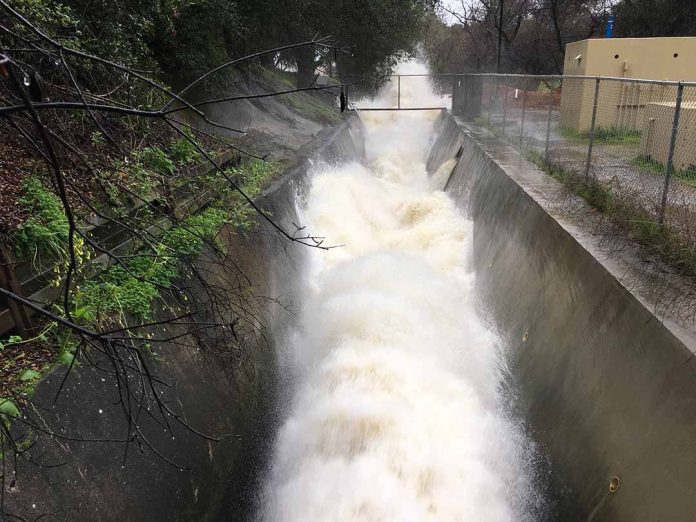
Santa Clara Valley Water District Chair of the Board of Directors John Varela released the letter below to the public in response to continued rains that have caused Anderson Reservoir in Morgan Hill to fill beyond the storage limit set by the state Division of Safety of Dams. The reservoir was at about 87 percent of its total capacity as of Feb. 9.
Varela’s letter reads:
Dear Neighbors,
Since Anderson Dam was built in 1950, the reservoir has reached its capacity in ten separate years, most recently in 2006. When Anderson Reservoir is full, it produces quite a visual spectacle as water flows down the spillway, yet it also can result in flood risks along Coyote Creek.
Given the discovery of seismic vulnerabilities, Santa Clara Valley Water District has operated the dam under a storage restriction since 2009. Anderson Dam is under the regulatory jurisdiction of the California Division of Safety of Dams and, because we operate a small hydroelectric facility at the dam, the Federal Energy Regulatory Commission also regulates the dam. Currently, these regulatory agencies have set a reservoir elevation restriction equivalent to 68 percent of capacity, or 61,810 acre-feet of water.
Agencies set these storage elevation restrictions understanding that reservoirs cannot physically be kept below a restricted level at all times; for example, they understand that storms produce rainfall runoff into reservoirs that will temporarily increase the amount of water in them. These agencies have not requested the water district do anything beyond releasing water from the dam’s existing outlet as quickly as possible, to help bring water levels back down.
Anderson’s outlet has been 100% open since Jan. 9, releasing water into Coyote Creek at a rate of more than 400 cubic feet per second. But, with the many wet storms that have occurred one after another, the rate of flow into the reservoir has at times exceeded the rate of water we are releasing from the outlet. As a result, the water level in the reservoir has risen, and with more storms in the forecast, we project that the reservoir could be full in the next few days.
The water district will continue to release water from the dam’s outlet until the water level falls below the restricted level. Depending on the amount of rainfall inflow from future storms, this could take 4 to 9 weeks.
There is a concern if a massive earthquake of 7.25 on the Richter Scale (larger than the Loma Prieta earthquake we had in 1989) were to occur within two kilometers of the dam while the reservoir is full. This would be an earthquake of a magnitude larger than any that has ever been recorded on the nearby Calaveras Fault. While earthquakes cannot be predicted with any precision, the chance of such an earthquake occurring in the next few weeks is very remote.
Should people be worried? Keep in mind that this is the same dam that has performed well in numerous earthquakes, including the 1989 Loma Prieta quake, since it was built in 1950.
What would happen if a massive quake did occur? There’s a chance that the dam could be damaged, but the chance of immediate dam failure is exceedingly remote. It is possible that we would have several days or weeks to reduce the water level with emergency pumps before any further damage could compromise the integrity of the dam.
This situation reminds us of the importance of completing the project to rehabilitate Anderson Dam. Due to the existing seismic safety restriction on Anderson, it is likely that we will need to release more than 30,000 acre-feet of water to the Bay this year that could have otherwise been stored for future use-that’s enough water to supply 60,000 households for an entire year. Our project team and expert consultants are working diligently to complete the design of this major project so that the reservoir can be fully utilized as soon as possible. Currently, we anticipate beginning construction in 2020 and completing by 2024.
For any questions surrounding seismic matters or the Anderson Dam Seismic Retrofit Project, please feel free to call Hemang Desai at 408-630-3017 or Katherine Oven at 408-630-3126.
For any questions surrounding Anderson’s water storage, flows, or releases, please feel free to call Aaron Baker directly at 408-630-2135 or Garth Hall at 408-630-2350.
Sincerely,
John L. Varela
Chair/Board of Directors






